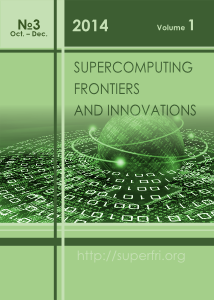Research Problems and Opportunities in Memory Systems
Abstract
The memory system is a fundamental performance and energy bottleneckin almost all computing systems. Recent system design, application,and technology trends that require more capacity, bandwidth,efficiency, and predictability out of the memory system make it aneven more important system bottleneck. At the same time, DRAMtechnology is experiencing difficult {\em technology scaling}challenges that make the maintenance and enhancement of its capacity,energy-efficiency, and reliability significantly more costly withconventional techniques.In this article, after describing the demands and challenges faced bythe memory system, we examine some promising research and designdirections to overcome challenges posed by memoryscaling. Specifically, we describe three major {\em new} researchchallenges and solution directions: 1) enabling new DRAMarchitectures, functions, interfaces, and better integration of theDRAM and the rest of the system (an approach we call {\em system-DRAM co-design}), 2) designing a memory system that employs emergingnon-volatile memory technologies and takes advantage of multipledifferent technologies (i.e., {\em hybrid memory systems}), 3)providing predictable performance and QoS to applications sharing thememory system (i.e., {\em QoS-aware memory systems}). We also brieflydescribe our ongoing related work in combating scaling challenges ofNAND flash memory.References
See submitted PDF file, References section.
Published
2015-02-13
Issue
Authors retain copyright and grant the journal right of first publication with the work simultaneously licensed under a Creative Commons Attribution License that allows others to share the work with an acknowledgement of the work's authorship and initial publication in this journal.


